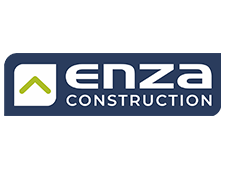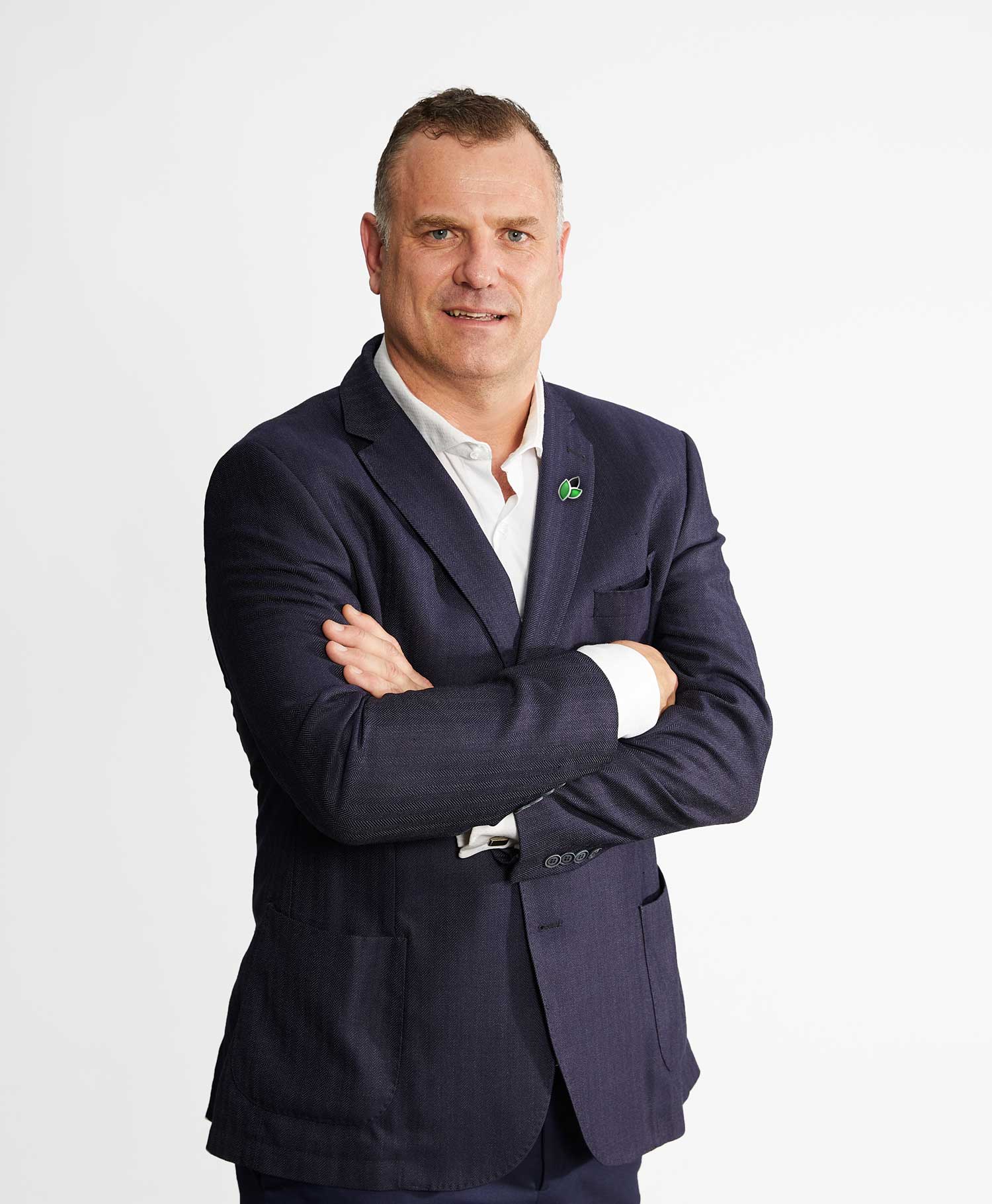SERITI GREEN: Champions of the Just Energy Transition
In the quest for a sustainable future, sources such as wind and solar energy have grown from mere alternatives to cornerstones of Africa’s prosperity, and prominent black-owned renewable energy entity Seriti Green stands right at the forefront of this evolving journey. “Our goal is to unlock Africa’s potential by developing, constructing, and operating large-scale renewable energy projects in South Africa and across the African continent,” sets out CEO Peter Venn.
For Seriti Green, embracing an energy system rooted in the abundant renewable sources of solar and, in particular, wind, is pivotal in moving beyond Africa’s myriad social, economic, health, and environmental challenges. Indeed, the organisation goes as far as to label the powerful connection between nature and energy as ‘Africa’s next frontier’.
“Our experience in developing, constructing, and operating large-scale renewable energy projects within South Africa and across the African continent positions us uniquely to unlock and harness this immense potential,” says CEO Peter Venn, who himself brings two decades of energy experience and the delivery of significant renewable energy projects across the African continent and today drives the strategy and implementation of developing, constructing and operating renewable projects in Africa.
Owned by a consortium consisting of VennEnergy, RMB, Standard Bank and majority shareholder Seriti Resources, Seriti Green is a black-owned energy visionary merging industry-leading modelling analysis tools with decades of experience in large-scale renewable energy projects. “Creating renewable energy solutions for Africa, by Africans, we have pioneered Africa’s renewable energy landscape for over 15 years,” Venn declares, “and are collectively committed to advancing South Africa towards a just and sustainable energy transition.”
BLACK-OWNED VISIONARY
Seriti Green came into being at the close of 2022, Venn explains, via the acquisition of 55% of Windlab’s African assets, a company that Venn had himself led since 2011. “That marked the creation of Seriti Green as we see it today,” he states, of a profound shift in the company’s scope and offering. “We are a 100% South African- and 60% black-owned wind-led renewable energy developer, in an industry dominated by international names,” Venn details, adding that wind has a particular profile making it ideally suited to the South African context.
“Wind is far more predominant than solar in the peak periods of demand,” he explains, “and that means that there is actually a very good balance between the two. We then deploy our unique wind mapping capabilities to identify and develop premium greenfield wind energy sites with remarkable precision,” Venn says, with the combination of expert personnel and advanced technology long a cornerstone of the company’s success.
Mpumalanga’s topography and climate conditions, with its consistent and strong wind flow, make it ideal for the efficient operation of wind turbines. Under construction in the Highveld, the 900MW Ummbila Emoyeni hybrid renewable energy facility will be the largest of its kind in South Africa and is highlighted by Venn as set to redefine the Mpumalanga province’s journey towards a just energy transition (JET).
Initially, Venn explains, the infrastructure to support the unprecedented production capacity will be constructed in the form of a huge substation connecting it to the 400kV transmission between Camden and Secunda; the remainder of the project is then carved up into roughly 155MW chunks in order to facilitate and expedite construction. “At the present time we are building, in parallel, the entire grid infrastructure and the first of these 155MW phases,” Venn explains.
“Our intent is to build out the further five phases of the remaining 750MW, with some solar and battery storage, over the next three to five years to be fully commissioned by 2027, by which time it will provide electricity for the equivalent of some half a million South African households. This is by far the leading renewable energy project in Mpumalanga from a scale perspective.” Seriti Resources has spearheaded the diversification required in achieving the JET, Venn adds.
“Many mining companies are still behind when it comes to diversifying and having a real energy solution,” he explains. “We are now coal and wind, and when this project reaches a significant stage, we will be able to provide all the renewable energy to our mining sites to give us a truly diversified portfolio. We can also sell to Eskom, for example, to assist in the energy challenges we have in South Africa, or any of the big factories in the area – it is a full, 100% diversification solution from a renewables perspective.”
WORKING IN SYNERGY
As the hub of South Africa’s energy generation, primarily from coal, Mpumalanga has a developed infrastructure that can support additional forms of energy generation, and this is just one of a slew of Seriti Green projects in the Mpumalanga province, Venn is anxious to stress. “The pipeline is strong,” he opens. “We are looking at permitting some of the abundant rehabilitated land that we have on the coal mining side for various renewable opportunities, while we have many other undertakings currently in the works awaiting permits, finance and being rolled out.
“Wind farms in this region can operate alongside existing coal power plants, offering a complementary energy source,” Venn adds, “which can be particularly advantageous during periods when wind energy production is high, allowing for reduced reliance on coal and consequently, a decrease in greenhouse gas emissions. This coexistence is pivotal for a gradual transition to renewables, ensuring energy security and stability during the shift.
“The presence of an established energy infrastructure also means that connecting a new wind farm to the grid is more cost-effective and less complex, access which facilitates the immediate distribution of generated wind energy to consumers.” It is Seriti Green’s focus on, and intimate understanding of Mpumalanga, South Africa’s energy heartland, that Venn posits as a key differentiator for the company.
“Mpumalanga is critical to the transition we are targeting,” he states. “It houses the vast majority of suppliers, and having generation close to where the demand is, between Gauteng and Mpumalanga, is vital and prevents the vast technical losses incurred in projects in the Northern Cape have when electrons are transported over 1000km.” This transition of some of the energy production to renewable sources, crucial to diversifying and making the energy grid more sustainable, has been as challenging from an ideological perspective as it has from a technological one, Venn reveals.
“No-one had ever seen a wind farm in Mpumalanga, and, of course, the natural reaction of most people to proposed change is an instant, ‘no’. The responsibility for us was to override this and educate on the benefits of these advancements; we were fortunate to have plenty of examples of successes we have had with wind farms in other parts of South Africa to illustrate this.
“It has been very refreshing to see how the local communities have adopted our projects, taking ownership of them and embracing the investment and development they bring.”
Venn is keen to close in dispelling the narrative he has seen formulated whereby renewables and coal are pitted directly against one another as adversaries vying for a role in the energy transition. “That is not the case at all,” he clarifies. “We have a window of a decade now to illustrate that both are required for energy security. I truly believe that only the marriage of mining and renewables can bring benefit to rural communities.
“For Africa to succeed we need these elements to operate so that there is not a concentration of urbanisation, and everybody feels the need to move into the cities which then become swamped. We need to uplift people in rural areas through the likes of education, jobs and health, and in my opinion only renewables and mining can achieve that.”
Driving the continent forward through the development of renewable energy projects that unlock sustainable value for generations to come is the essence of Seriti Green’s purpose. “Our vision transcends decarbonisation, to represent a world of fairness, of sustainability, and of shared prosperity,” Venn summarises. “Our Just Energy Transition addresses the challenges of climate change whilst partnering local communities to create space for them to grow and flourish: Seriti Green is not waiting for the future, we’re building it one green electron at a time.”



